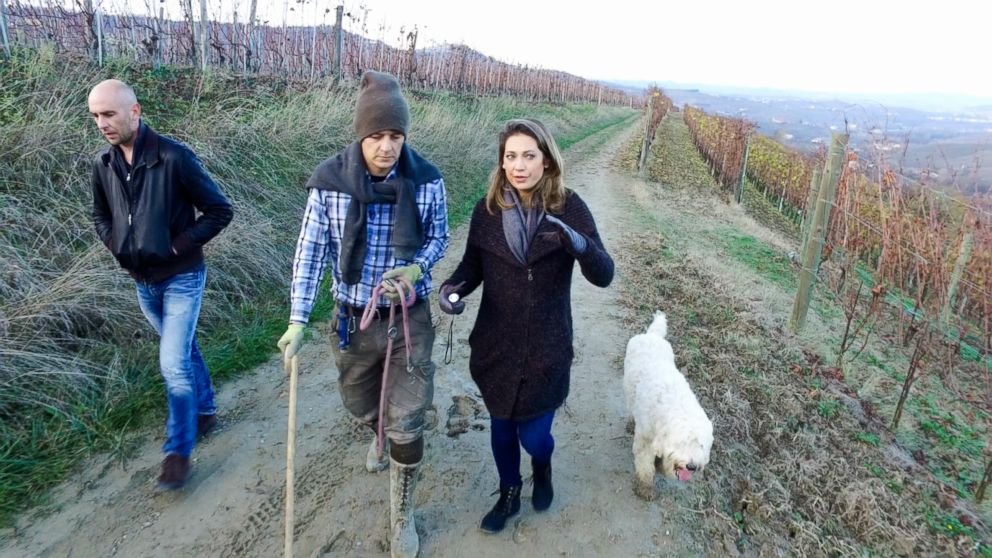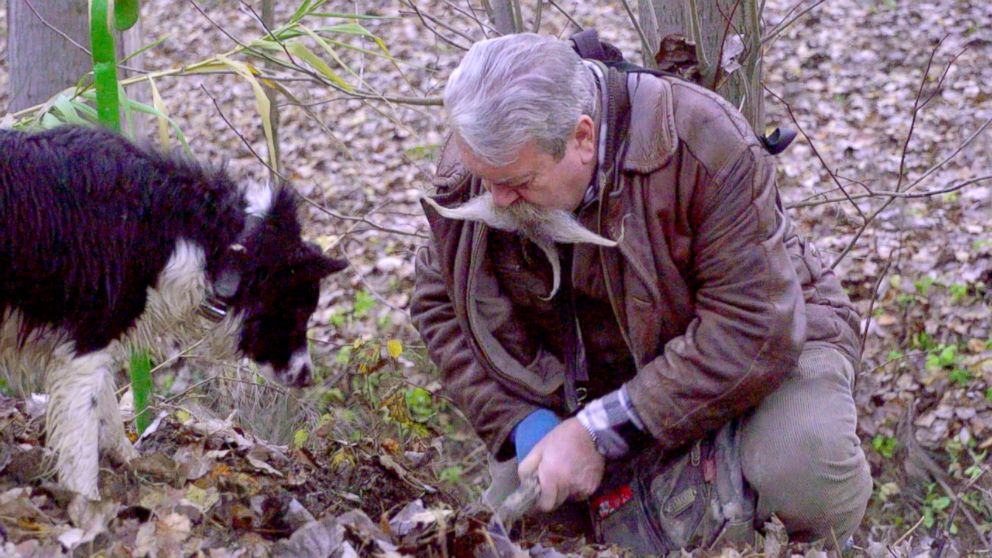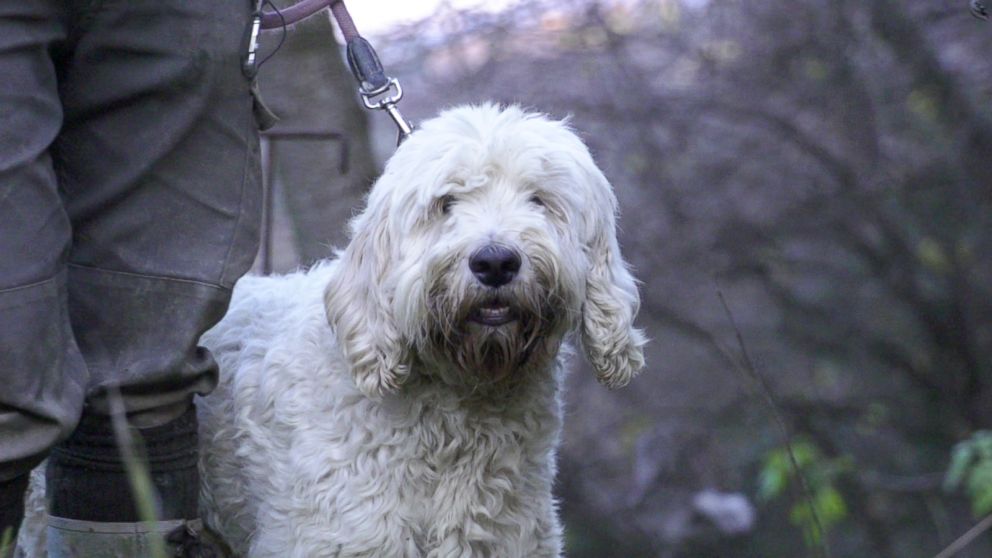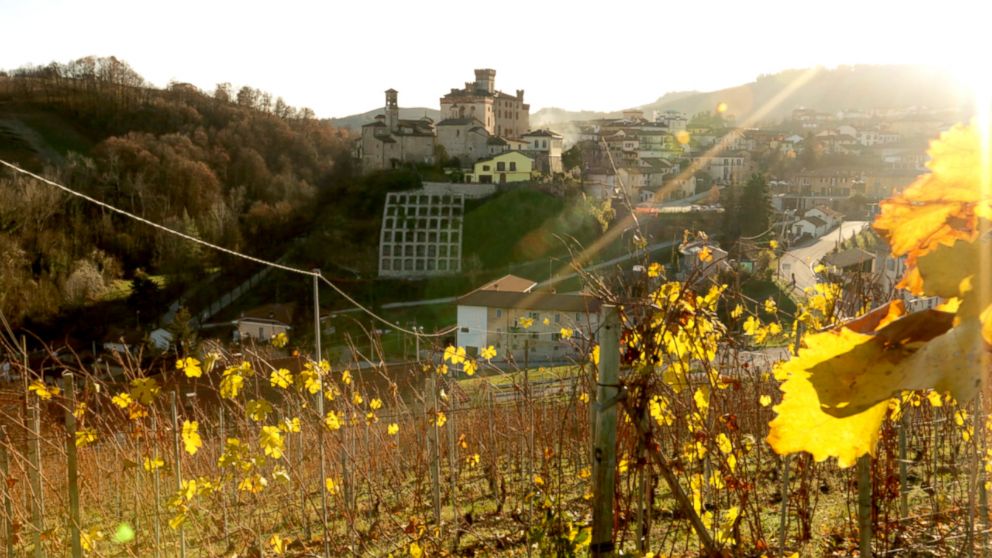Treasure hunt: Ginger Zee searches for rare, expensive Italian white truffles
The special truffle only grows in specific regions, at certain time of the year.
— -- More than a hundred thousand dollars for a fungus? It’s true. Some of the rarest mushrooms in the world -- white truffles -- have seen eager bidders raising their offers well beyond six figures.
But why would someone would spend so much money on a kind of mushroom? Fans say the pungent aromas and unique flavors are worth the price.
The white truffle is so expensive because it is so rare and more reliant on weather than many other truffles. Unlike the black truffle, another renowned culinary fungus that can be commercially farmed, the white truffle can only be found in the wild -- in specific regions, at limited time of the year.

Alba, Italy, is one of the places white truffles are known to grow. At night, truffle hunters and their dogs comb both public and private lands in the area to find them.
Once they are picked, white truffles' journey from tree roots to sellers happens fast.
The shelf life of a freshly-harvested truffle is a week at the most, truffle experts say, and the largest market for the industry is the U.S. Many truffle get express airfare, so they usually arrive on American soil within 24 hours.
Urbani Tartufi is the world’s largest truffle distributor. The company says it controls 70 percent of the world’s truffle trade –- including approximately 700 different products like oils and sauces.
Owner Giammarco Urbani says 90 percent of white truffles are sold to the fresh market and only 10 percent are used in preserved products.
Truffle buyers are looking for the best quality, which means truffles that are large, fresh and pungent.

Urbani estimated that there are around 200,000 hunters looking for truffles in Italy. ABC News' trip to Alba in 2016 found that the weather conditions for truffle hunting have been far from perfect. Truffles need cool, wet weather to thrive.
“We have an extension of the summertime," truffle hunter Carlo Marenda said about the 2016 season. "We started to find the truffles just one month ago at the end of October. So we [lost] one month of the season."
Fourth-generation truffle hunter Gianni Monchiero said that the lack of mud in the wooded areas was not a good sign for a hearty Alba white truffle season; they need rainfall in the months before to flourish.

That shortened season translates to higher prices. According to Urbani Tartufi, the prices of truffles from 2016 to 2017 more than doubled. The value of white truffles surged, after the dry, hot summer, up to $3,000 per pound.
Another change to the environment that has also been challenging to truffle hunters: ivy. An invasive species of ivy in the forests has grown uncontrolled and made truffle hunting that much more difficult.

Together with Edmondo Bonelli, Marenda co-founded "Save The Truffle," which launched a crowdfunding campaign focused on educating people about the importance of keeping the forest clean.
“Because we agreed,” Bonelli said. “We can’t change the climate. We can change something about the environment so that the trees that produce truffles are not lost.”
“Save the Truffle” is working with business owners like Andrea Farinetti of Borgogno Winery to raise funds to help preserve and clean the forest, hoping to ensure the future of the white truffle.

"The idea is to maintain the biodiversity," Farinetti said. "In the white truffle exists many kind of truffles -- different in the bouquet, different in the taste, different in everything. This is major. This is the fortune of the truffle of Alba.”
For more stories from ABC News' "Food Forecast" series, download the ABC News App on iOS or Android.





